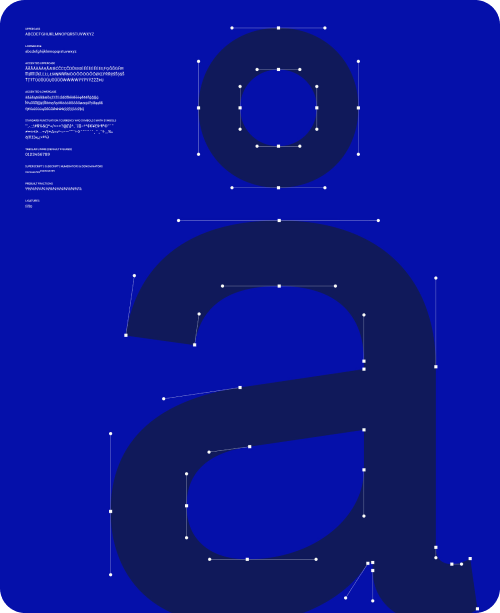The Psychology of Fonts: How Fonts Impact Perception
INSIGHT
In the vast realm of design, where every nuance matters, the choice of fonts emerges as a powerful tool that goes beyond aesthetics. Fonts, seemingly subtle in their existence, wield a remarkable influence on human perception. As a professional journalist delving into the intricate world of font psychology, let's uncover the mysteries of how fonts shape our understanding of written content.
The Power of First Impressions
Fonts play a pivotal role in forming initial impressions. Studies reveal that the font choice in a document or on a website can significantly impact the perceived credibility and trustworthiness. Consider how a formal serif font may evoke a sense of tradition and reliability, while a sleek sans-serif font may suggest modernity and simplicity.
Serif vs. Sans Serif: Decoding the Styles
Before diving into the psychological nuances, let's differentiate between Serif and Sans Serif fonts. Serif fonts, characterized by small lines or decorative features at the ends of characters, are often associated with formality and tradition. On the other hand, Sans Serif fonts, lacking those embellishments, exude a more contemporary and clean feel. Understanding these distinctions is crucial in deciphering the messages conveyed through different font styles.
Legibility and Readability: A Delicate Balance
The legibility and readability of a font are vital factors that influence how easily readers can consume content. Legibility refers to the clarity of individual characters, while readability considers the overall ease of reading a block of text. Font size, spacing, and letter design all contribute to finding the delicate balance between legibility and readability.
Expressing Emotion Through Fonts
Fonts possess an uncanny ability to convey emotions. Imagine a handwritten script evoking warmth and personal touch, or a bold, uppercase font exuding confidence and authority. Designers can strategically choose fonts to complement the emotional tone of the content, creating a more immersive reading experience.
Brand Identity: Crafting a Distinctive Image
For businesses, fonts become a vital component of brand identity. Think about the distinctive fonts associated with globally recognized brands. The choice of font contributes to brand recognition, helping consumers connect with a company's personality and values.
Cultural Influences on Font Perception
Cultural backgrounds significantly shape font preferences. What might be perceived as elegant in one culture could be seen as too elaborate in another. Designers need to consider cultural nuances when selecting fonts, ensuring that the chosen typography aligns with the target audience's expectations and preferences.
The Subtle Art of Font Pairing
Effective font pairing is akin to a well-coordinated dance. Fonts need to complement each other harmoniously while maintaining readability. Designers often follow guidelines to create visually appealing combinations, enhancing the overall aesthetic of the content.
Accessibility: Ensuring Inclusivity in Design
In a diverse world, accessibility in design is paramount. Fonts play a role in ensuring that content is accessible to all individuals, including those with visual impairments. Choosing legible fonts and considering factors like contrast contribute to creating inclusive designs.
Psychological Impact of Typography in Advertising
In the competitive landscape of advertising, fonts become strategic tools for capturing attention and conveying messages. Different font styles evoke varied emotional responses, influencing consumer perceptions and choices.
Digital Age: Fonts in the Online Landscape
In the digital era, where content is predominantly consumed online, font choices extend beyond print. Web designers must consider readability on various devices and screens. Trends in web typography continually evolve, reflecting the dynamic nature of the digital space.
Impact of Font Choices on User Experience (UX)
User experience hinges on various elements, and typography plays a crucial role. Fonts can either enhance or hinder the user experience. Designers must consider factors like font size, line spacing, and legibility to ensure an optimal reading experience for users.
The Science Behind Font Preferences
Neuroscientific studies delve into the brain's response to different fonts. The choice of font can trigger specific neural pathways, influencing how information is processed and retained. Understanding the science behind font preferences provides valuable insights for designers seeking to create impactful content.
Evolution of Fonts: From Print to Pixels
The history of fonts traces an intriguing journey from traditional print to the digital landscape. As technology advances, fonts adapt and innovate. Modern designers draw inspiration from historical fonts, creating a seamless blend of the classic and the contemporary.
Conclusion
In the intricate tapestry of design, fonts emerge as silent storytellers, shaping perceptions, and conveying emotions. The psychology of fonts is a realm where aesthetics and cognition intertwine, influencing how we interpret written content. As designers and communicators, let's approach font choices with the same care and consideration we give to the words themselves, recognizing the profound impact they have on the audience.
FAQs
Can fonts really influence how we perceive information?
Absolutely. Studies show that font choices affect credibility, trust, and overall perception.
How do cultural influences play a role in font preferences?
Cultural backgrounds shape aesthetic preferences, impacting how fonts are perceived globally.


